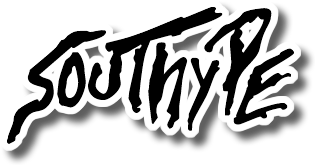
Script typefaces are a captivating category of fonts that emulate the fluid strokes of handwriting or calligraphy, adding a touch of artistry, elegance, and personality to various design projects. In this article, we will delve into the fascinating world of script typefaces, exploring their characteristics, showcasing examples, and discussing their diverse applications in different design contexts.

-
Characteristics of Script Typefaces:
Script typefaces possess distinct characteristics that contribute to their aesthetic appeal and functionality. Let’s explore some key features that define script typefaces:
1.1. Fluid Strokes and Natural Flow: One of the defining features of script typefaces is their fluid strokes and natural flow. These fonts mimic the organic movement and rhythm of a brush or pen, creating a sense of elegance and a personal touch in typography.
1.2. Varied Stroke Width: Script fonts often exhibit variations in stroke thickness, mimicking the natural pressure changes that occur during handwriting. These variations add visual interest and enhance the dynamic quality of the letterforms, creating a harmonious and appealing aesthetic.
1.3. Ligatures and Flourishes: Many script typefaces include ligatures, which are special character combinations that merge certain letters. Ligatures enhance legibility and create a more harmonious and authentic look. Additionally, decorative flourishes and swashes are often present in script fonts, adding artistic flair and providing opportunities for creative customization.
1.4. Formal vs. Casual Styles: Script typefaces span a wide spectrum, ranging from formal and elegant to casual and playful styles. Formal script fonts emulate traditional calligraphy with refined and sophisticated letterforms. In contrast, casual scripts have a more relaxed and informal appearance, mimicking casual handwriting styles. The choice of style depends on the desired tone and purpose of the design.
-
Examples of Script Typefaces:
To illustrate the versatility and beauty of script typefaces, let’s explore some noteworthy examples:
2.1. Formal Scripts:
2.1.1. Great Vibes: Great Vibes is a prime example of a formal script typeface. With its graceful, sweeping letterforms and delicate thin strokes, it exudes a sense of elegance and sophistication. Great Vibes is commonly used for upscale invitations, luxury branding, and sophisticated designs that require a touch of refinement.
2.1.2. Edwardian Script: Edwardian Script is a classic script typeface that captures the essence of traditional calligraphy. Its ornate and highly legible letterforms make it suitable for formal occasions, such as wedding invitations, certificates, and prestigious events.
2.2. Casual Scripts:
2.2.1. Pacifico: Pacifico represents a popular casual script typeface. With its slightly uneven strokes and playful letterforms, it conveys a friendly and approachable tone. Pacifico is often used in branding, packaging, and designs that aim to evoke a sense of laid-back charm.
2.2.2. Brush Script: Brush Script, as the name suggests, mimics the look of brush calligraphy. Its bold and dynamic strokes give it a sense of energy and movement, making it ideal for eye-catching headlines, posters, and designs that require a bold and expressive visual impact.
2.2.3. Lobster: Lobster is a widely recognized casual script typeface known for its distinct, hand-drawn style. It features bold letterforms with unique character flourishes, making it a popular choice for modern and trendy designs. Lobster is often seen in branding, logos, and packaging that target a youthful and vibrant audience.
-
Applications of Script Typefaces:
Script typefaces find their applications in a wide range of design contexts:
3.1. Branding and Logos: Script typefaces are frequently used in branding to evoke a sense of elegance, sophistication, or handcrafted authenticity. They add a personal touch to logos, conveying the human element and fostering a connection with the audience.
3.2. Invitations and Stationery: Script typefaces lend themselves well to formal invitations, such as wedding invitations, gala event invitations, and corporate stationery. Their elegant and refined appearance sets the tone for the event and creates a sense of anticipation.
3.3. Packaging and Labels: Script typefaces can add a touch of personality and charm to product packaging and labels. They help create a distinct visual identity, communicate brand values, and appeal to specific target markets. Script fonts are particularly popular in industries such as cosmetics, gourmet foods, and artisanal products.
3.4. Editorial Design: Script typefaces are used in editorial design to enhance the visual appeal of book covers, magazine titles, and article headings. They inject a sense of artistry and create a focal point that draws the reader’s attention.
3.5. Signage and Displays: Script typefaces are effective for creating eye-catching signage, store displays, and event banners. Their decorative and intricate letterforms stand out and grab attention, making them suitable for retail environments, exhibitions, and promotional materials.
Conclusion:
Script typefaces offer a wide range of possibilities in design, from elegant and refined scripts to casual and playful lettering. With their fluid strokes, varied stroke width, ligatures, and decorative flourishes, script typefaces bring a unique sense of artistry and personal touch to typography. Whether used in branding, invitations, packaging, editorial design, or signage, script typefaces can effectively communicate messages, evoke specific emotions, and create visually appealing designs that resonate with the audience.

